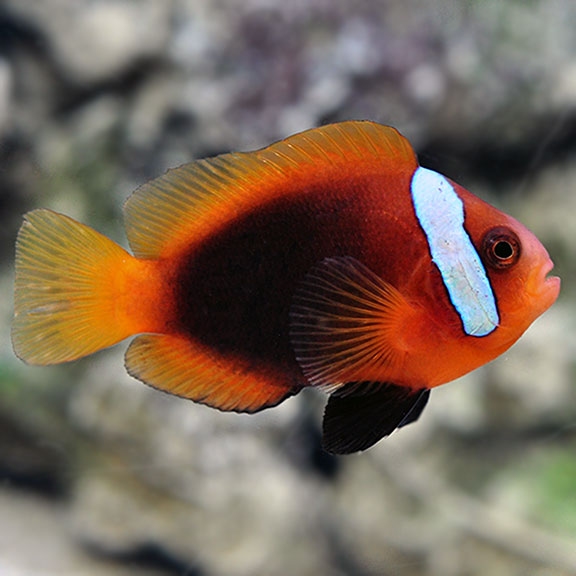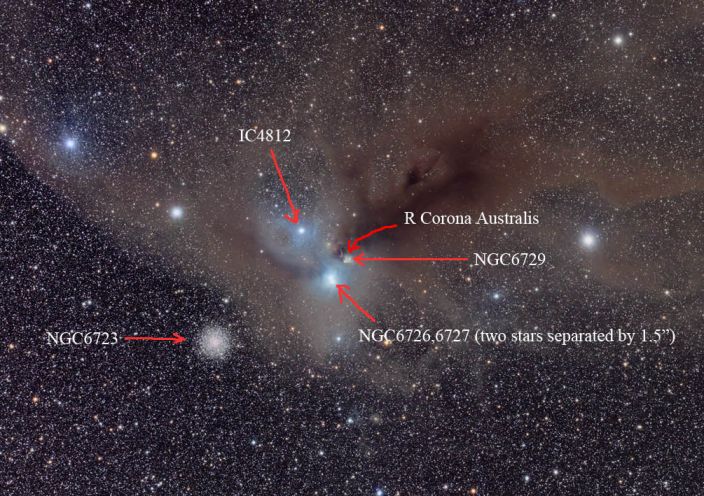 Across Corona Australis
Across Corona AustralisExplanation: Cosmic dust clouds are draped across a rich field of stars in this broad telescopic panorama near the northern boundary of Corona Australis, the Southern Crown. Less than 500 light-years away the denser clouds effectively block light from more distant background stars in the Milky Way. The entire vista spans about 5 degrees or nearly 45 light-years at the clouds' estimated distance. Toward the right lies a group of bluish reflection nebulae cataloged as NGC 6726, 6727, 6729 and IC 4812. The characteristic blue color is produced as light from hot stars is reflected by the cosmic dust. The dust also obscures from view stars in the region still in the process of formation. Smaller yellowish nebula NGC 6729 surrounds young variable star R Coronae Australis. Below it are arcs and loops identified as Herbig Haro (HH) objects associated with energetic newborn stars. Magnificent globular star cluster NGC 6723 is above and right of the nebulae. Though NGC 6723 appears to be part of the group, its ancient stars actually lie nearly 30,000 light-years away, far beyond the young stars of the Corona Australis dust clouds.
| << Previous APOD | This Day in APOD | Next APOD >> |



